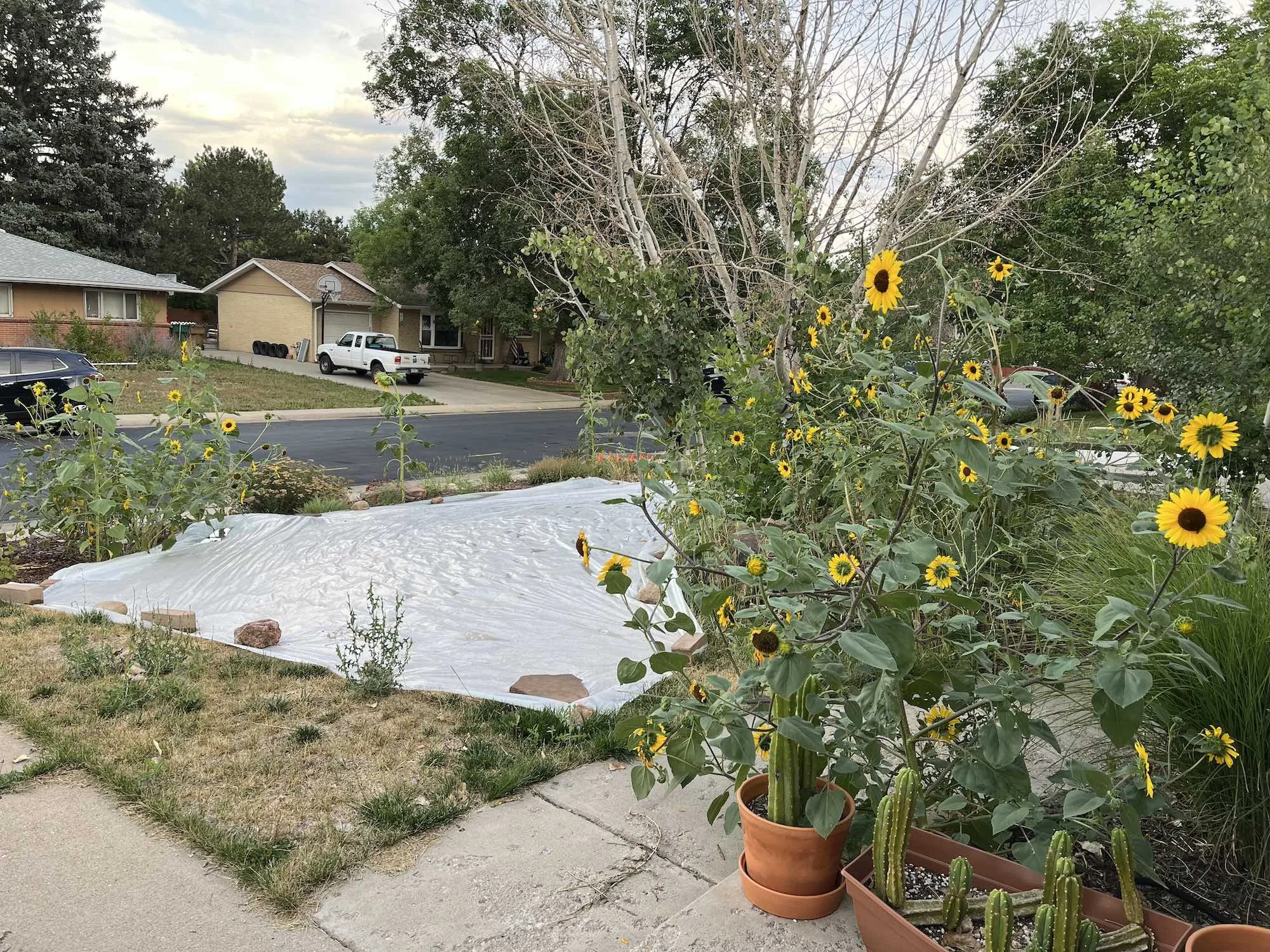Landscape Design
Living in the front-range of Colorado brings its own series of challenges when it comes to plants. After purchasing my home, I realized I didn’t want to be part of the “Green Lawn” club, understanding the strain on water resources and lack of ecological diversity a plain lawn brings. Thus began my amateur journey with landscape design. This is that story.
Stage 1: Planning & Mapping
When we first purchased the home, the yard was relatively green but required a minimum of two waterings a week. We had already allocated a large chunk of our water bill to the 16’x8’ raised bed for vegetables, and were not eager to continue feeding the monoculture by the curb.
I measured out the area with tape measure and through the interactive satellite images provided by our county. I tracked the sun exposure of the area throughout the first year, pinpointing where hot spots occurred. I watched the rain move through the lawn to understand how the topology determined the flow of water.
Map Existing Structures & Plants
There was a fair amount of hardscaping already part of the yard that needed to be accounted for. We also have planted a number of drought-tolerant plants along the non-grassy areas alongside existing plants.
This exercise also helped to discern which plants would need to be removed to increase the available growing space and light exposure.
Stage 2:
Solarization
There are a couple of ways you can remove/kill grass in your yard. The more laborious options include physical removal with a shovel or sod cutter. But you run the risk of stripping nutrients from the soil with that option.
We decided to retain those nutrients by solarizing with massive clear/white tarps to promote intense heat underneath. This heat would help to sterilize weed seeds and encourage the composting of existing plant material. Those tarps stayed in place for 3 months in total.


